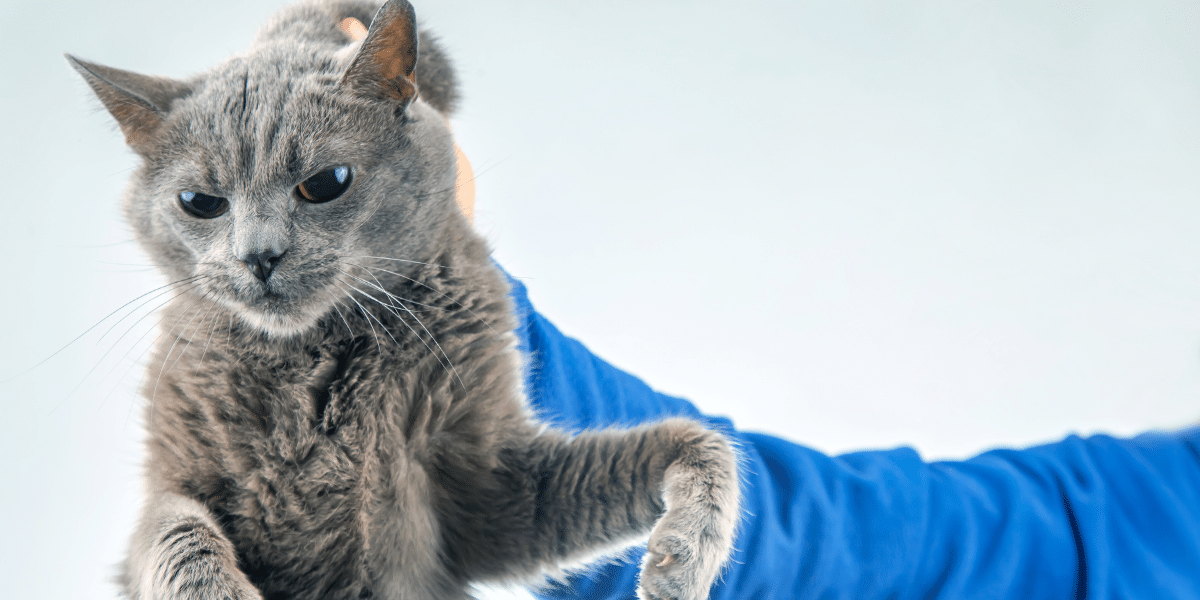The Myth Behind Scruffing
Scruffing a cat is a widely misunderstood practice. Many believe that mother cats scruff their kittens as a form of discipline, but in reality, the primary reason for scruffing is to transport their young safely. When a mother cat carries her kittens by the scruff, it’s a natural and gentle action that does not cause harm.
However, when humans attempt to replicate this behavior, they often apply excessive force or grip the wrong area, leading to unnecessary discomfort or distress for the cat. Cat behaviorists and veterinarians now discourage scruffing as a common practice, as it can cause fear and stress in adult cats.
The Flexor Reflex
Young kittens have what’s called a “flexor reflex,” which causes them to go limp when their mother scruffs them. This reflex fades as they grow older, meaning that adult cats do not respond the same way. A cat that remains still when scruffed might not be relaxed but rather fearful or in pain.
Anita Kelsey, a feline behaviorist, states:
“She [a mother cat] scruffs her kittens not to reprimand them but to carry them or move them from danger. For an adult cat, the action of a human scruffing it is frightening and puts them into a tense and guarded state.”
Because kittens lose this reflex as they mature, scruffing an adult cat does not induce the same relaxed state but instead triggers stress and can even lead to defensive aggression.
Consequences of Scruffing
Scruffing was once a common restraint technique among veterinarians and cat owners. However, animal behaviorists now understand that this method has more negative effects than benefits. Here’s why scruffing is discouraged:
- Causes Fear: Scruffing mimics how a predator, such as a bird of prey, would grab a cat. This association can trigger fear responses, making the cat feel threatened.
- Painful for Adult Cats: Mother cats naturally control their grip and pressure, whereas humans may inadvertently cause discomfort or even pain by pinching the skin too tightly.
- Not an Effective Training Method: Some cat owners believe scruffing can be used to discipline bad behavior, but it does not communicate the intended lesson. Instead, it instills fear and anxiety in the cat.
- Damages Trust: Consistently scruffing a cat can damage the bond between the pet and its owner. The cat may begin to associate human hands with discomfort, leading to avoidance or defensive behavior.
Alternatives to Scruffing
Instead of scruffing, consider these safer handling methods when needing to restrain or manage your cat:
- Support the Body: When lifting a cat, always place one hand under their chest and the other supporting their hind legs.
- Use a Towel Wrap: If you need to restrain a cat for medical purposes, use a towel wrap method, often called “the burrito wrap,” to keep them secure without causing panic.
- Positive Reinforcement: Train cats through rewards such as treats and praise rather than forceful restraint.
- Allow Voluntary Handling: Work on desensitizing your cat to be comfortable with touch by gradually getting them used to being held and handled.
Final Thoughts
Scruffing a cat may seem like a natural way to handle them, but it’s an outdated approach that can cause stress, fear, and pain. Veterinary professionals and animal behaviorists advise against scruffing unless absolutely necessary in extreme cases. Instead, adopt gentler handling methods that respect your cat’s comfort and well-being. Building trust and positive associations will lead to a healthier and happier relationship with your feline companion.









Facebook Comments